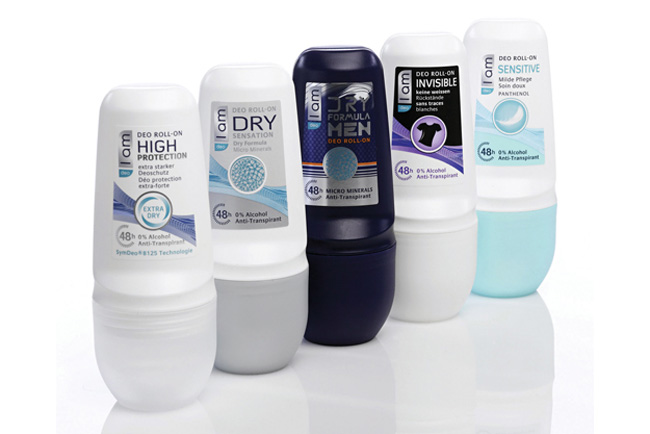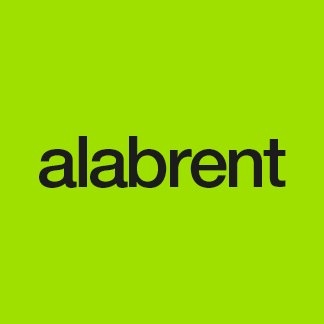Redacción Alabrent
A panel of brand-owner packaging experts from different market sectors came together recently, courtesy of FINAT, the international label industry association, to debate specifically ‘the future of product decoration’. Here, FINAT Managing Director Jules Lejeune recounts some interesting aspects of the conversation.The occasion for this panel discussion was the 2014 FINAT Annual Congress in Monte Carlo last June, attended by our association’s membership, which spans the extremely complex label industry value chain, from raw material suppliers to label printers.
The panel was well-qualified to discuss the subject of product decoration. Participants were Olivier Delataulade (F), finishing and printing expertise controller at L’Oréal, with extensive experience in the company’s packaging and brand strategies; Jesper Toubøl (DK), head of LEGO’s packaging and processing research, and with a wide-ranging career with the company in strategic roles; Arno Melchior (D), global supply excellence director with Reckitt Benckiser, tasked with the continuing harmonisation and optimisation of the merged companies’ two product ranges and their packaging; and Brendan Kinzie (USA), a senior director for G3 Enterprises, global suppliers -- with a specialist focus on the wines and spirits industry -- of packaging components, including labels, as well as logistics services and technical and laboratory expertise.
Choosing the right label technology for the product on hand
Labelling is not a single-track activity. As well as self-adhesive and glue-applied labels, it embraces sleeving, in-mould solutions, flexible packaging, and direct-to-container print. L’Oréal, said Olivier Delataulade, chooses to employ all the available technology options, including multiple imaging processes on one label, and makes each choice on the basis of ‘What’s the best solution for THIS product?’ With product and label print runs getting shorter and shorter as a result both of local language and regulatory requirements and product versioning, he said, production using digital print is an increasingly-favoured option.
L’Oréal is also keen to keep abreast of imaging trends, like 3D polarising Fresnel lenses, metallisation, holography, the ‘no-label look’, fabric substrates, and leaflet labels. ‘Labels’, Mr Delataulade observed, ‘are more technical than other print’.
Overall, Arno Melchior defined the decision-making criteria at Reckitt Benckiser as ‘quality and volume – on time.’ For very high-volume product packaging runs, Reckitt Benckiser are finding in-mould labelling a good choice. Interestingly, he said, ‘label printers could usefully be much more aligned with our production process’; and added that the company are also moving more of their packaging and print supply functions in-house, or as close to their production units as possible, to respond appropriately to the persistent challenges of tight delivery timelines. Another challenge is presented by label design changes created in the marketing department, which can mean that ‘a lot of labels of the old design are wastefully thrown away. This is another area for more alignment.’
Should more brand owners print their own labels, or can our label industry platform provide everything they want? G3 Enterprises’ Brendan Kinzie replied: ‘I don’t see in-house print happening in wines in the short term. Our label print involves lots of special processes like embossing to attract consumers’ attention – it’s too complex – and it is the label that actually sells 80-90% of wines in America!’ For G3 Enterprises’ clients’ specialist packaging/labelling needs, ‘it is quality that drives the decoration choice decision,’ he confirmed, adding that it is G3 Enterprises’ creative agency that buys label print. Talking about label print technologies, he told us, ‘flexo is doing well, and so is digital print, which is enjoying – and will continue to enjoy -- a lot of growth in the wine industry, where it still represents a very small percentage of label volumes.’
LEGO packaging differs significantly from that of FMCG products in that it consists primarily of cardboard boxes, and its market focus is on children, as Jesper Toubøl explained. ‘Digital print is growing fast – it enables us, for example, to respond to seasonal needs’, but he advised: ‘the separate, additional label still needs to compete with other packaging segments’.
Technology choice made at too late a stage in production
Mr Melchior drew attention to some concerns Reckitt Benckiser experiences on the packaging/labelling front. The decision on choice of decoration technology is, he said, taken at too late a stage in the chain. ‘We may need, for example, to change a bottle shape to accommodate a shrink sleeve. The label supplier therefore definitely needs to be integrated at an earlier stage in the production process.’ Mr Kinzie concurred with this statement, because, in his world of wines and spirits, the ‘label is actually printed and applied – and then assessed for its value and efficiency!’.
Connecting with brand owners: a label printer’s challenge
In truth, one of the most difficult challenges experienced by FINAT label converter member companies is making contact with the right people in an end-user company to discuss their needs and wants. For L’Oréal, the right pathway is to involve not just purchasing, but also marketing. ‘For packaging, the marketing people need to say what they want, and then we can look at the technicalities’, said Mr Delataulade.
Mr Melchior, Reckitt Benckiser, enlarged on this theme. He said that ‘purchasing’s target is to control costs. The design manager and packaging manager are the company contacts who are likely to want to develop higher-quality, innovative solutions… But, in the end, it’s always about price in some way or other. If you have a product that people will pay more for, then there’s room for extra label costs.’ ‘And,’ added Mr Toubøl, talking for LEGO, ‘you really need to be able to add value – especially for products for kids.’
That may be the case, but the fact remains that ‘end users will generally go to label converters in the event of a practical problem – and if that doesn’t produce a solution, they will go to the material supplier’, said Mr Melchior. That is also the case for G3 Enterprises. ‘In a field like ours, involving lots of glass,’ said Mr Kinzie, ‘whenever there’s a problem we expect the vendor to cope!’
It would appear that there is still some way to go before label printers can establish a more fundamental relationship in a
brand owner’s packaging planning.
Innovation?
What about brand owners’ typical response to innovation in product decoration? The response was universally guarded. For L’Oréal, Mr Delataulade commented: ‘It’s really difficult to get end-user companies to commit to starting a testing programme for new or different labels or materials, so that they can make relevant comparisons’. Mr Melchior added, for Reckitt Benckiser: ‘New products must perform better. As a brand owner, you need to be clear on what additional benefits a new product can deliver, and then you can choose to increase the product price to accommodate it if necessary. The factory, of course, would like to continue to always run the same product – no change!’ LEGO’s Mr Toubøl agreed, adding that brand-owning companies ‘would need to move to more flexible production platforms’ to accommodate product decoration innovations.
‘Adding value’ may indeed be the key influencing factor. Panelists reconfirmed that brand owners are prepared to pay more for a label if the consumer will pay more for the product as a result.
Sustainability
On the high-visibility topic of sustainability, panelists outlined their companies’ definition of the word, and their response to it. Mr Delataulade identified reduced-weight products as the core definition within L’Oréal. For Reckitt Benckiser, it is their carbon footprint reduction programme, in which energy usage, and the product/packaging relationship, are key. But ‘It’s our company and its investors that care… Consumers don’t want to pay more for “green” products.’ Product downgauging, Mr Melchior continued, is also a current company focus, and the company is continuing to reduce aluminium foil calipers – but it is a complex matter, and may not in fact make price reductions possible.
Mr Toubøl agreed that, as far as sustainability is concerned, ‘consumers believe it’s the job of their suppliers. LEGO plans to be carbon-neutral by 2020’, he said. Mr Kinzie supported his fellow panelists: ‘G3 Enterprises works with supplier scorecards, and our own internal ones… Everyone wants the more sustainable option, but consumers aren’t willing to pay more for it’.
Recycling
A continuing central focus for FINAT and its members across the value chain is the self-adhesive label release liner recycling programmes that are now active in Europe. But what of the brand owners? LEGO already regranulate plastics, and G3 Enterprises have contracts with waste-handling companies. However, neither L’Oréal nor Reckitt Benckiser currently participate in any release liner recycling programmes. In fact, Mr Melchior stated that, in Reckitt Benckiser, there had been ‘internal problems in engaging colleagues to separate the waste (they don’t explicitly separate liner).’ He added: ‘If the label industry introduced an incentive programme, it might help!’ FINAT is very actively promoting release liner recycling initiatives in presentations at mainstream end-user events. This year, FINAT also launched its own international Recycling Awards, with recognition both for brand owners and label makers.
What of the future?
The influence of online consumer purchasing will, the panelists agreed, challenge the current model of packaging and labelling, and may even involve game-changing innovation. Already, the ubiquitous cellphone in partnership with QR codes on packaging is creating a new relationship between the consumer purchaser and a retail product – which, often, may no longer be physically selected/purchased in a shop, but ordered online. This does not, however, negate the value of product decoration and the role of the label: it only increases the number of platforms on which it must perform. Arno Melchior, from his viewpoint within a major diversified consumer goods company, aptly summarised the panelists’ opinion. ‘There are real opportunities for you as label printers to respond – by integrating into your product offering shrink sleeves, direct digital print, and flexible packaging. It’s your logical next step!’



